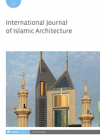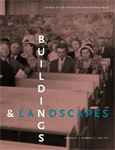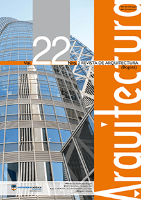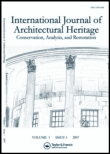
International Journal of Islamic Architecture
Scope & Guideline
Bridging Cultures Through Architectural Innovation
Introduction
Aims and Scopes
- Exploration of Historical Islamic Architecture:
The journal publishes research that delves into historical architectural practices across the Islamic world, analyzing significant structures, urban planning, and cultural influences that have shaped architectural identities. - Contemporary Architectural Practices:
A focus on modern interpretations and adaptations of Islamic architectural principles, including the integration of contemporary design methodologies while respecting traditional values and cultural contexts. - Interdisciplinary Approaches:
Encouragement of interdisciplinary research that connects architecture with fields such as history, art, sociology, and environmental studies to explore the complexities of built environments in Islamic contexts. - Cultural Heritage and Preservation:
Emphasis on the importance of cultural heritage, including studies on conservation practices and the impact of globalization and urbanization on traditional Islamic architectures. - Sociopolitical Contexts of Architecture:
Research that investigates the influence of sociopolitical factors on architectural development, including colonial legacies, nationalism, and identity politics within Islamic societies.
Trending and Emerging
- Climate Change and Architecture:
An increasing number of studies are addressing the impact of climate change on architectural practices within Islamic contexts, exploring sustainable design solutions and adaptation strategies. - Migration and Refugee Architecture:
Research focusing on the architectural responses to migration and displacement, particularly in the context of Syrian refugees, is gaining traction, highlighting the intersection of architecture, identity, and social justice. - Digital Technologies in Architecture:
The integration of digital technologies and parametric design in Islamic architecture is a growing theme, emphasizing innovative approaches to design and representation in contemporary practice. - Cultural Heritage and Urban Regeneration:
A rising interest in the role of cultural heritage in urban regeneration efforts, particularly in historic cities, is evident, reflecting a broader trend towards sustainable urban development. - Political and Social Activism in Architecture:
There is a notable trend towards examining the role of architecture as a form of political and social activism, with scholars investigating how built environments can foster community engagement and resilience.
Declining or Waning
- Traditional Theoretical Frameworks:
There seems to be a waning emphasis on classical theoretical frameworks in Islamic architecture, with researchers increasingly seeking innovative approaches that transcend conventional narratives. - Static Historical Narratives:
The journal has seen a decline in papers strictly adhering to static historical narratives without engaging with contemporary implications or interdisciplinary perspectives. - Regional Studies with Limited Scope:
Research focused narrowly on specific regions or time periods without broader contextualization is becoming less common, indicating a shift towards more global and interconnected studies. - Purely Aesthetic Analyses:
There is a noticeable reduction in studies that focus solely on the aesthetic aspects of Islamic architecture, as scholars are now prioritizing functional, social, and environmental considerations. - Overemphasis on Architectural Styles:
An overemphasis on categorizing architectural styles is diminishing, as the field moves towards understanding the socio-cultural dynamics that shape architecture beyond stylistic classifications.
Similar Journals

ArcHistoR-Architecture History Restoration
Preserving Heritage, Inspiring InnovationArcHistoR-Architecture History Restoration is an esteemed open-access journal published by UNIV MEDITERRANEA REGGIO CALABRIA since 2014, focused on the multifaceted domains of architecture, history, and visual arts. This journal serves as a vital platform for the dissemination of research findings, innovative methodologies, and critical discussions surrounding the restoration and history of architectural practices, appealing to a diverse audience of researchers, professionals, and students in these fields. With a commitment to scholarly excellence, ArcHistoR has positioned itself within the academic community, reflected in its ranking in the 2023 category quartiles, where it secured Q4 in Architecture and Q3 in both History and Visual Arts and Performing Arts. The journal facilitates global collaboration and knowledge sharing in its areas of expertise, further underscoring its relevance and significance. Based in Italy, effective communication and cooperation in the restoration community can flourish through the journal's purview. For those dedicated to expanding their understanding and contributing to the discourse on architectural history and restoration, ArcHistoR is an invaluable resource.

Cuadernos de Proyectos Arquitectonicos
Connecting ideas and professionals in the architectural landscape.Cuadernos de Proyectos Arquitectonicos is an influential open-access journal dedicated to the field of architecture, published by the prestigious Universidad Politécnica de Madrid. Since its inception in 2010, this journal has served as a vital platform for architectural researchers, professionals, and students to share innovative ideas and comprehensive studies that advance the discourse in architectural design and project development. With its ISSN 2171-956X and E-ISSN 2174-1131, the journal aims to disseminate high-quality peer-reviewed articles, case studies, and theoretical insights that contribute to the understanding and evolution of architecture in contemporary society. The journal facilitates a global reach for its authors and readers, supporting the dissemination of knowledge in a rapidly changing architectural landscape. By providing open access to its content, Cuadernos de Proyectos Arquitectonicos aims to foster an inclusive academic environment, encouraging collaborative discourse and the exchange of innovative practices within the architectural community.

Buildings & Landscapes-Journal of the Vernacular Architecture Forum
Celebrating the Richness of Local ArchitectureBuildings & Landscapes: Journal of the Vernacular Architecture Forum is a pivotal scholarly publication that delves into the intersection of architecture, urban studies, and the arts. Published by University of Minnesota Press, this journal serves as a vital platform for the exploration and dissemination of research covering the rich tapestry of vernacular architecture and its implications in contemporary society. With its ISSN 1936-0886 and E-ISSN 1934-6832, the journal has established its significance, reflected by its notable quartile rankings in 2023, including Q4 in Architecture and Urban Studies, and Q3 in Visual Arts and Performing Arts. Although not open access, it remains an essential resource for researchers, professionals, and students looking to deepen their understanding of how built environments shape cultural identities and vice versa. The journal welcomes contributions that critically examine the role of vernacular architecture in both historical and modern contexts, making it an influential beacon of knowledge from its establishment in 2010 to the present. For those invested in the dialogue surrounding place, culture, and architecture, Buildings & Landscapes offers a unique and scholarly avenue for inquiry.

Revista de Arquitectura-Bogota
Unveiling Contemporary Issues in ArchitectureRevista de Arquitectura-Bogota is a premier academic journal dedicated to the field of architecture, published by the esteemed Universidad Católica de Colombia, Facultad de Diseño. Since its inception in 1999, this Open Access journal has provided a vital platform for the dissemination of innovative research and critical discourse in architectural studies. With its commitment to the principles of open accessibility, the journal ensures that its diverse range of scholarly articles, case studies, and reviews are readily available to researchers, professionals, and students globally. The journal aims to foster collaboration and dialogue among architects, urban planners, and educators by publishing high-quality content that reflects contemporary issues and advancements in architecture. As an influential resource in the architectural community, Revista de Arquitectura-Bogota plays a crucial role in shaping the future of architectural practice and education in Latin America and beyond.

Journal of Architecture and Planning -King Saud University
Fostering Dialogue on Design and Development.Journal of Architecture and Planning, published by King Saud University Press, serves as a critical platform for scholarly dialogue and innovation within the field of architecture and urban planning. This peer-reviewed journal, bearing the ISSN 1018-3604, aims to disseminate high-quality research that addresses contemporary challenges in architectural design, environmental sustainability, and urban development. Situated in Riyadh, Saudi Arabia, this journal not only highlights regional architectural practices but also fosters global discussions, making it an essential resource for researchers, professionals, and students alike. Although currently not open access, the journal is dedicated to providing extensive coverage of the latest findings and theoretical advancements in architecture and planning, paving the way for impactful contributions that can transform communities and enhance the built environment.

Boletin Academico-Revista de Investigacion y Arquitectura Contemporanea
Empowering Scholars to Transform Architectural Discourse.Boletin Academico-Revista de Investigacion y Arquitectura Contemporanea is a distinguished journal published by SIELAE & UNIV CORUNA, Fac Filologia, focusing on the interconnectivity of contemporary architecture, cultural studies, and visual arts. With an E-ISSN of 2173-6723, this open-access publication serves as an essential resource for researchers, academics, and professionals eager to explore innovative perspectives and methodologies in these dynamic fields. Spanning a commendable period from 2016 to 2023, the journal demonstrates a strong academic footprint, ranked in the Q2 category for both Architecture and Cultural Studies, and holds a prestigious Q1 ranking in Visual Arts and Performing Arts. With Scopus rankings reflecting its growing influence—particularly in Visual Arts and Architecture—Boletin Academico delivers a platform that is not only academically rigorous but also culturally relevant, encouraging discourse that shapes the future of contemporary architectural and artistic practices. The journal’s commitment to open access further enhances its appeal, ensuring that groundbreaking research is readily available to an extensive audience.

International Journal of Architectural Heritage
Exploring Architectural Legacies, Inspiring Innovation.The International Journal of Architectural Heritage is a premier publication dedicated to the multidisciplinary fields of architecture, conservation, and visual arts. Published by TAYLOR & FRANCIS INC, this journal serves as a vital platform for scholars and practitioners who aim to advance knowledge in the preservation of cultural heritage and architectural innovation. With an impressive impact factor reflecting its critical acclaim, including rankings in the top quartile (Q1) across multiple categories in 2023, the journal is recognized as a key resource in Arts and Humanities, particularly in Visual Arts and Performing Arts and Conservation. Since its inception in 2007, the journal has consistently provided rigorous peer-reviewed research, offering enriching insights and fostering collaborations amongst students, researchers, and professionals committed to the future of architectural heritage. As it continues to influence the field through its diverse and impactful contributions, readers can expect to engage with leading-edge studies that not only illuminate current trends but also inspire innovative practices in safeguarding architectural legacies.

Studies in History and Theory of Architecture-Studii de Istoria si Teoria Arhitecturii
Exploring the Intersection of Architecture and HistoryStudies in History and Theory of Architecture - Studii de Istoria si Teoria Arhitecturii, published by EDITURA UNIV ION MINCU in Romania, serves as a crucial platform for scholarly dialogue in the interdisciplinary fields of architecture, conservation, and urban studies. With an ISSN of 2344-6544 and E-ISSN 2457-1687, this open-access journal has been disseminating valuable research outputs since 2014, facilitating global access to knowledge. Although it currently holds a Q4 quartile ranking in multiple categories, including Conservation and Urban Studies, the journal aims to elevate discussions surrounding architectural theory and history, safety, risk, and reliability in built environments. Positioned at the intersection of arts and humanities, the journal encourages contributions that challenge conventional paradigms and enrich academic discourse. As a vital resource for researchers, professionals, and students alike, Studii de Istoria si Teoria Arhitecturii is dedicated to nurturing the growth of architectural knowledge and its practical applications in contemporary society.

Al-Shajarah
Enriching Understanding of Islamic Heritage and ModernityAl-Shajarah is an esteemed academic journal that serves as a vital platform for scholarly discourse in the fields of Cultural Studies, History, Philosophy, and Religious Studies. Published by the International Islamic University Malaysia and the International Institute of Islamic Thought and Civilization, the journal reflects a profound commitment to advancing understanding and dialogue surrounding Islamic thought and its place in modern society. With an ISSN of 1394-6870 and an evolving publication history since its convergence in 2011, Al-Shajarah offers valuable insights that cater to a broad array of readers, from seasoned researchers to emerging academics. The journal's rigorous peer-review process and commitment to cultural and religious scholarship are underscored by its categorization in the Q3 and Q4 quartiles in critical academic fields, and its Scopus rankings demonstrate its relevance within the global academic landscape. While open access is not currently available, Al-Shajarah remains a crucial resource for those seeking to enrich their understanding of Islamic civilizations and philosophy, providing access to pioneering research that shapes the conversation within these disciplines.

TRANSACTIONS OF THE ANCIENT MONUMENTS SOCIETY
Illuminating the Intersection of History and PreservationTRANSACTIONS OF THE ANCIENT MONUMENTS SOCIETY is a distinguished journal published by the Ancient Monuments Society in the United Kingdom, focusing on the rich interplay between architecture, conservation, and religious studies as they pertain to ancient monuments and heritage. With an ISSN of 0951-001X, this journal serves as an essential platform for researchers, professionals, and students interested in exploring methodologies, case studies, and theoretical perspectives that enhance our understanding of historical preservation and cultural significance. Although it has been classified in Q4 quartiles in prominent categories such as Architecture, Conservation, and Religious Studies, the journal plays a vital role in fostering scholarly dialogue in these areas. Access options and updates are available, making it easier for enthusiasts and experts alike to engage with ongoing discussions surrounding ancient monuments. Despite its discontinued coverage in Scopus, the journal remains an invaluable resource for those aiming to contribute to the conservation discourse and to understand the relevance of ancient sites in contemporary society.